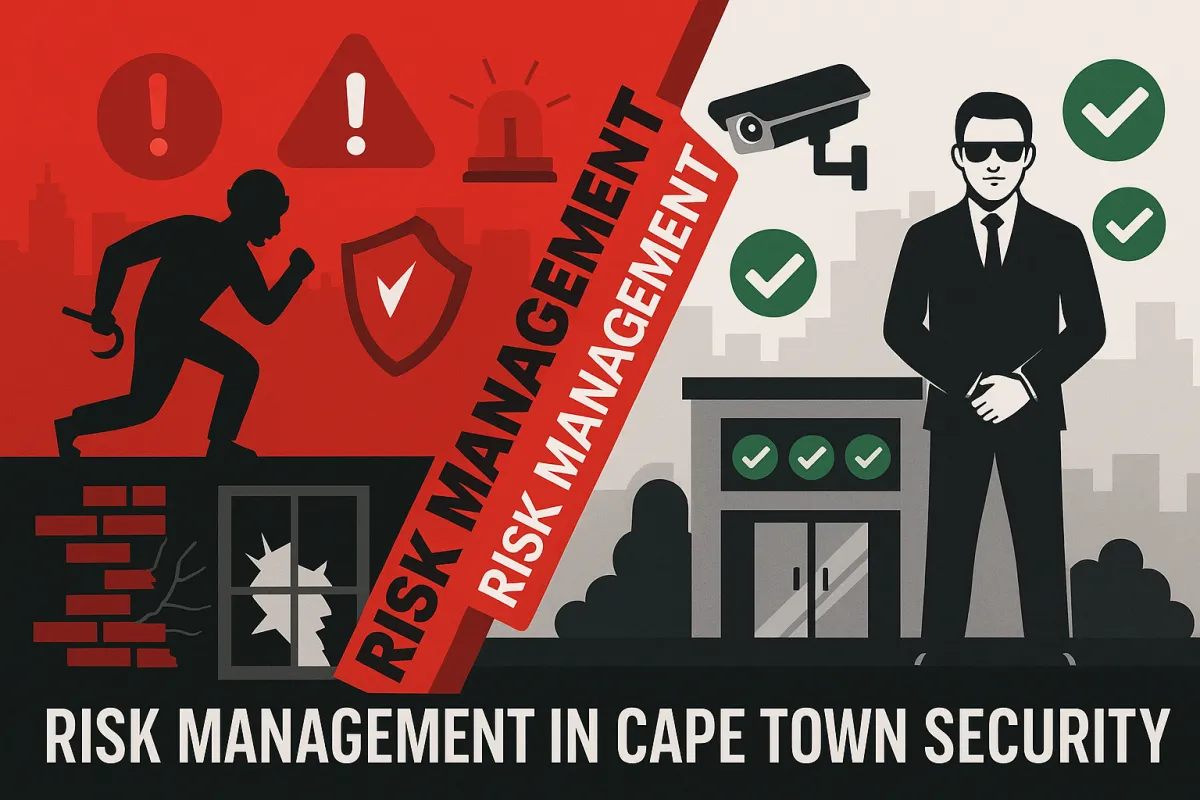
Risk Management in Cape Town Security: Minimizing Threats Before They Escalate
Risk Management in Cape Town Security: Minimizing Threats Before They Escalate
Cape Town is a city of opportunity—home to thriving businesses, global tourism, and world-class events. But it is also a city where risks are real, from opportunistic crime and workplace theft to complex threats against executives and high-value assets. In this environment, risk management is not optional—it’s essential. Professional security providers understand that the best way to protect clients is not to wait for an incident to happen, but to minimize threats before they escalate.
What Is Risk Management in Security?
Risk management is the process of identifying, assessing, and mitigating potential threats before they become actual incidents. In the security sector, it means looking beyond “guards on duty” and instead creating a proactive, layered approach.
Key steps include:
Threat assessment: Analyzing potential risks specific to the client’s environment.
Preventive planning: Developing strategies to reduce vulnerabilities.
Monitoring and detection: Using surveillance, patrols, and technology to spot warning signs.
Response readiness: Ensuring that if an incident occurs, it is contained quickly and effectively.
Why Cape Town Requires Smart Risk Management
Cape Town has unique challenges compared to other cities. High levels of opportunistic crime, large volumes of tourists, and high-profile corporate activity create a complex mix of risks. Security providers in Cape Town must be able to:
Safeguard businesses against theft, fraud, and vandalism.
Protect high-profile executives, diplomats, or visitors.
Secure large events, retail spaces, and residential estates.
Balance visibility and discretion, ensuring protection without disruption.
By addressing these risks proactively, companies reduce liability, protect assets, and ensure staff and clients feel safe.
Tools of Modern Risk Management
Effective risk management blends human expertise with advanced tools. Examples include:
Surveillance and AI-powered CCTV to detect unusual behavior.
Access control systems to prevent unauthorized entry.
On-site patrols and visible security presence to deter opportunistic crime.
Emergency protocols and training so staff know how to respond if needed.
Regular audits and risk reviews to adapt to changing environments.
These tools don’t just react to problems—they anticipate them.
The Security Consortium Advantage
Security Consortium SA specializes in proactive risk management for businesses, executives, and communities across Cape Town. Their services combine manned guarding, armed response, surveillance systems, and compliance-driven strategies to create comprehensive protection.
By conducting detailed risk assessments and tailoring solutions to each client, Security Consortium ensures that threats are minimized before they escalate. This proactive approach doesn’t just protect assets—it builds confidence for employees, customers, and business leaders.
Minimizing Threats = Maximizing Confidence
The best security incidents are the ones that never occur. By investing in professional risk management, Cape Town businesses and communities can focus on growth, hospitality, and productivity without the constant worry of potential threats.
Conclusion
Risk management in security is about foresight, planning, and prevention. For businesses, executives, and communities in Cape Town, working with a compliant, professional provider like Security Consortium SA means peace of mind—and safety that is proactive, not reactive.
👉 Learn more at Security Consortium SA
👉 Explore their full range of services
👉 Contact the team here to discuss tailored risk management strategies.